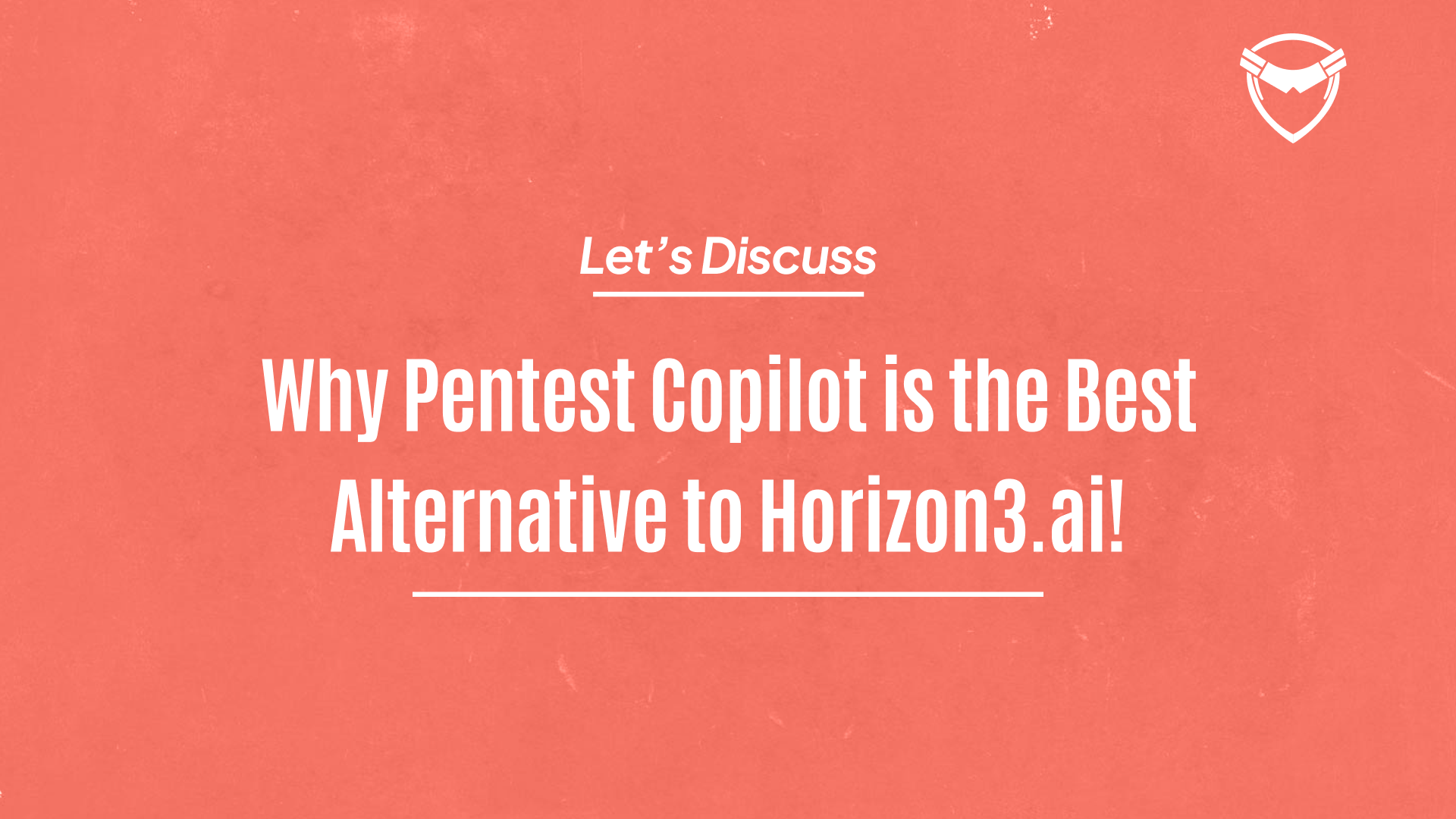In the rapidly evolving landscape of cybersecurity, choosing the right platform for continuous red teaming and automated penetration testing is essential for organizations looking to stay ahead of sophisticated threats. While Horizon3.ai and its flagship product NodeZero have been a strong contender in this space, there are several reasons why BugBase's Pentest Copilot is a superior alternative. In this post, we will dive into the key reasons why Pentest Copilot is the best choice for hackers, red teams, and SOC professionals, and explore why you may need an alternative to Horizon3.ai.

One of the limitations of Horizon3.ai’s NodeZero is that while it offers automated pentesting and continuous assessments, it lacks the deep, contextual adaptability that security professionals need in real-time. NodeZero runs predefined tests and performs standard checks but does not adjust dynamically to the specific nuances of each environment.
For advanced attackers or highly targeted threats, this can leave gaps in vulnerability detection. This is particularly true for internal assessments, where real-time adaptability and attack path visualization are crucial.
Horizon3.ai does an excellent job of assessing the external attack surface, particularly for cloud environments like AWS and Azure. However, organizations with complex internal networks, Active Directory infrastructures, and advanced segmentation need a tool that can also perform comprehensive internal network assessments.
NodeZero tends to focus more on the external attack surface, and while it does include internal testing capabilities, they are more limited in scope compared to a platform like Pentest Copilot, which specializes in internal red teaming and lateral movement simulations.
NodeZero offers phishing impact testing, but it mainly serves as a supplement to existing phishing tools like KnowBe4 or Proofpoint. If you're looking for a platform that offers fully customizable phishing simulations—including real-time credential tracking, custom templates, and post-attack remediation recommendations—NodeZero may fall short. In contrast, Pentest Copilot provides advanced phishing capabilities as part of its native feature set, allowing for more flexibility in social engineering assessments.
NodeZero offers standard compliance reporting, but for organizations looking for more comprehensive insights mapped to frameworks like MITRE ATT&CK, ISO, SOC2, and GDPR, Horizon3.ai’s reports may not provide the same level of detail and customization that Pentest Copilot can deliver. This can be a critical factor for companies with stringent compliance and auditing requirements.
Horizon3.ai does provide basic segmentation testing to validate network boundaries and lateral movement prevention, but its capabilities in this area are not as robust as Pentest Copilot’s. For organizations that need advanced internal network testing—especially those with Active Directory environments, multi-relay attack simulations, and post-exploitation activities—Pentest Copilot offers a more comprehensive toolset that goes beyond surface-level testing.
| Feature | Pentest Copilot (BugBase) | **Horizon3.ai (NodeZero)** |
|---|---|---|
| AI-Driven Red Teaming | Adaptive, real-time simulations based on your specific environment | Automated simulations with limited real-time adaptation |
| Dynamic Attack Graphs | Evolving, real-time attack graphs that map vulnerabilities dynamically | Static attack path visualizations, limited real-time updates |
| Internal Assessment Capabilities | Comprehensive internal testing (AD, lateral movement, multi-relay attacks) | Focuses on external surface testing, with limited internal coverage |
| Phishing Simulations | Fully customizable, built-in phishing campaigns with real-time tracking | Phishing impact testing supplementing third-party tools |
| Credential Compromise Testing | Advanced credential stuffing, password spraying, dark web credential checks | Focuses on credential injection and AD exploitation |
| Cloud Pentesting | Comprehensive, context-driven cloud and hybrid testing | Cloud pentesting for AWS, Azure, with less internal context testing |
| Continuous, Adaptive Monitoring | Continuous, real-time adjustments based on evolving attack surface | Continuous testing with less context adaptation |
| Compliance Reporting | Detailed, customized compliance reports mapped to MITRE ATT&CK, ISO, SOC2 | Standard compliance reports with fewer advanced insights |
| Post-Exploitation Capabilities | Includes SAM dumping, browser credential extraction, file enumeration | Primarily focuses on AD misconfigurations |
While both platforms use AI to conduct penetration testing, Pentest Copilot goes a step further by delivering real-time, adaptive red teaming simulations. As new vulnerabilities and attack vectors are discovered, the platform dynamically adjusts its attack paths, making it an ideal solution for continuous red teaming in complex environments.
In contrast, Horizon3.ai primarily follows a more automated approach that lacks the same level of real-time context awareness, making it less suitable for ongoing internal assessments.
For organizations with large internal networks, Pentest Copilot offers a robust suite of tools for internal testing. These include Active Directory exploitation, lateral movement simulation, and multi-relay attacks. Horizon3.ai’s focus remains primarily on the external attack surface, which may leave gaps in testing for complex internal systems.
Phishing simulations are a critical aspect of red teaming. Pentest Copilot offers fully customizable phishing campaigns, enabling security professionals to test social engineering tactics and credential harvesting in real-time. On the other hand, Horizon3.ai offers phishing impact testing that supplements external phishing tools but does not provide the same depth of customization as Pentest Copilot.
Pentest Copilot continuously adapts its testing based on the evolving state of your attack surface. Whether new vulnerabilities emerge or the attack surface changes, the platform updates in real-time to deliver the most relevant and up-to-date assessments. Horizon3.ai, while offering continuous testing, is more focused on external risks and lacks the same context-driven adjustments during internal assessments.
For organizations focused on compliance, Pentest Copilot provides customized reports mapped to MITRE ATT&CK, ISO, SOC2, and GDPR standards, offering more detailed insights than Horizon3.ai’s standard compliance reports.
For organizations seeking an advanced, adaptive, and real-time platform for continuous red teaming, Pentest Copilot is the best alternative to Horizon3.ai. Its AI-driven adaptability, deep internal assessment capabilities, and customizable phishing simulations set it apart from Horizon3.ai’s NodeZero platform. Whether you’re a hacker, red team operator, or SOC analyst, Pentest Copilot delivers the tools you need to stay ahead of evolving threats, making it the go-to choice for comprehensive, continuous red teaming.